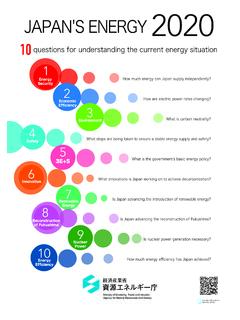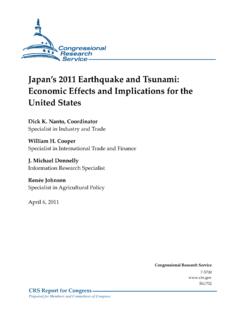Transcription of Homeowner’s Guide to Earthquake Safety - Property ID
1 Published by the California Seismic Safety Commission homeowner s Guide to Earthquake Safety 2020 EDITION State of California Gavin Newsom Governor SSC No. 20-01 The homeowner s Guide to Earthquake Safety was developed and published by the California Seismic Safety Commission. It is distributed under the provisions of the Library Distribution Act and Government Code Section 11096.* Copyright 2020 by the California Seismic Safety Commission. All rights reserved. Legislation This Guide has been developed and adopted by the California Seismic Safety Commission as required by Assembly Bill 2959, authored by Assemblymember Johan Klehs (Chapter 1499, Statutes of 1990), and by Assembly Bill 200, authored by Assemblymember Dominic Cortese (Chapter 699, Statutes of 1991). Ordering Information Single copies of this booklet are available from the California Seismic Safety Commission 2945 Ramco St. #195 West Sacramento, CA 95691 To order call (916) 263-5506 or download an online copy at Cover photo: Collapsed two-story home.
2 Nigel Spiers, 2011 Shutterstock, Enhanced License *Disclaimer: The effects, descriptions, recommendations and suggestions included in this Guide are intended to improve Earthquake preparedness; however, they do not guarantee the Safety of an individual or a structure. The California Seismic Safety Commission takes responsibility for the inclusion of material in this Guide . The State of California, the California Seismic Safety Commission, and all contributors to this document do not assume liability for any injury, death, Property damage, loss of revenue, or any other effects of earthquakes. Effective July 1, 2020, the 2020 edition of the homeowner s Guide to Earthquake Safety replaces the 2005 edition. California Seismic Safety Commission USING THIS Guide PAGE Selling or Buying a Home .. 4 Earthquake Hazards in California .. 6 Residential Earthquake Risks & the Disclosure Statement .. 12 Tips for a Successful Retrofit.
3 26 Earthquake Safety Tips .. 30 Other Information .. 34 $5 BILLION 5+ Earthquake -related losses in California since 1971 $1 BILLION 2+ Estimated home damage in the 1994 Northridge Earthquake Introduction EARTHQUAKES ARE INEVITABLE IN CALIFORNIA. They can occur at any time and without warning. They can be extremely destructive and even deadly. As a current or future owner of a home*, you should be aware of the risks potentially considerable and catastrophic that earthquakes pose to your Property and to the Safety of you and your family. THIS Guide is designed to help you prevent injuries, save lives, and avoid costly Property damage from earthquakes. It provides information on: The most common Earthquake -related hazards that can damage homes How to find and then fix the potential structural risks in a home How to find more information on Earthquake Safety If you sell your home, this Guide also will help you meet your requirements under California law.
4 There are no guarantees of Safety during earthquakes, but properly constructed and strengthened homes are far less likely to collapse or be damaged during earthquakes. The California Seismic Safety Commission advises you to act on the suggestions outlined in this Guide and make yourself, your family, and your home safer. *In this Guide , home means single-family residences, duplexes, triplexes, and four-plexes. Under California law, a seller of a home built before 1960 must fulfill certain disclosure requirements as part of the sales process (see page 4). PAGE 3 homeowner S Guide TO Earthquake Safety Selling or Buying A Home: Requirements & Recommendations SELLING A HOME If you are selling a home built before 1960, California law* requires you to: Properly strap the water heater. Provide buyers with the following documents: o A Residential Earthquake Risk Disclosure Statement (page 13), where you identify known home risks o A Natural Hazard Disclosure Statement, where you indicate if your home is in an Earthquake Fault Zone or Seismic Hazard Zone.
5 Ask your realtor for a copy of this Disclosure Statement. o A copy of this Guide (Your real estate agent is required to give you the Guide .) o Note: If you list your home through a real estate agent or broker, you should have him or her give the documentation to the buyer. Note: Keep a copy of all documentation signed by the buyer as evidence that you complied with the requirements. Under the law, you are NOT required to: Remove siding, drywall, or plaster to complete the disclosure statements. Hire someone to evaluate your home or to complete the disclosure statements. You may seek the assistance of a certified home inspector or a licensed contractor, architect, or engineer. Fix the risks before you sell your home; on the other hand, making the improvements could increase your home s value. *A summary of the relevant California laws related to seismic Safety is included at the end of this Guide (page 35). PAGE 4 homeowner S Guide TO Earthquake Safety BUYING A HOME Before you agree to buy a home, you should consider the following: Have a certified home inspector, licensed building contractor, engineer, or architect inspect the home and give an opinion on existing Earthquake risks and the estimated cost to strengthen the home.
6 Check the location of the home to determine if it is in an Alquist-Priolo Earthquake Fault Zone or an area susceptible to landslides, liquefaction, or tsunami. A licensed geotechnical engineer and/or engineering geologist can help you answer these questions and check the stability of the land under the home. Negotiate with the seller the cost of any proposed repairs or upgrades. State law does not require either the seller or buyer to strengthen a home against Earthquake risks. However, the cost to repair a home after a damaging Earthquake may far exceed the costs to strengthen the home and reduce the risks. Property Tax Exclusion Under California law (Revenue and Tax Code, Section ), a homeowner can implement seismic-strengthening measures without a Property tax reassessment. To receive the exclusion, you must have the work approved by the local building department and file a claim form with your county tax assessor.
7 Earthquake Insurance Typically, residential Property insurance does not include Earthquake coverage. A homeowner may purchase a separate Earthquake policy. Information on Earthquake insurance is on page 37. PAGE 5 homeowner S Guide TO Earthquake Safety Earthquake Hazards Is your home near an active Earthquake fault or an area prone to severe shaking? See the maps on pages 10 & 11. KNOW IF YOUR HOME IS AT RISK Earthquakes occur in California every day. As a homeowner , you should know if your home is in an area that is more prone to earthquakes or if the geology or soil conditions of your neighborhood or community present greater risk during an Earthquake . The more you know, the better able you are to take appropriate precautions to protect your home and family. Requirements under the law: If you are selling your home or any other type of real estate, no matter its age, you must disclose to buyers information about natural hazards that can affect the Property , including flood and fire hazards and Earthquake hazards.
8 You report this information on the Natural Hazard Disclosure Statement. The most common Earthquake -related natural hazards are ground shaking, fault ruptures, landslides, liquefaction, and tsunami. In addition, Earthquake damage to a dam can be a hazard to downstream homes. PAGE 6 Pilar Villamor, GNS Science, 2016 A strong Earthquake can cause the two sides of a fault to suddenly slide by one another. Even a relatively minor fault rupture can cause foundation and structural damage requiring expensive repairs. homeowner S Guide TO Earthquake Safety Earthquake Hazards GROUND SHAKING Guy Morrow, 2004 In California, ground shaking causes 99% of Earthquake damage to homes. Homes in areas near large active faults are more likely to feel severe shaking and experience damage than homes in other areas of the state. FAULT RUPTURE PAGE 7 PAGE 8 homeowner S Guide TO Earthquake Safety Earthquake Hazards Earthquake shaking can be strong enough to cause soil and rock on a hillside to slide down the slope.
9 A landslide can rip apart homes at the top of the slope and also crush homes at the bottom of the slope. Al Seib, Los Angeles Times, 1994 LANDSLIDE LIQUEFACTION Graeme Beattie, BRANZ, 2011 Strong ground shaking can cause liquefaction excess pore water pressure that reduces the soil s ability to support structures. Liquefaction can cause structures to tilt or collapse. homeowner S Guide TO Earthquake Safety Earthquake Hazards Is your home at risk of a tsunami? Check with your County s office of emergency services. TSUNAMI National Oceanographic and Atmospheric Administration, 1964 California s coastal areas are prone to damage from tsunami a series of large ocean waves caused by an underwater Earthquake or landslide. Tsunami waves can travel a great distance and cause flooding or wash away structures in low-lying areas along the shore, in and along harbors, and along the banks of rivers. Tsunamis generated by the 1964 Alaskan Earthquake (magnitude ) and the 2011 japan Earthquake (magnitude ) caused Property damage and loss of life in California.
10 DAM FAILURE A very strong Earthquake could damage a dam, resulting in sudden and devastating flooding of nearby homes. The 1971 San Fernando Earthquake damaged the Lower San Fernando Dam, which sits less than half-mile above the neighborhoods of the San Fernando Valley in southern California. The risk of an aftershock forced the three-day evacuation of residents of an 11-square-mile area. E. V. Leyendecker, United States Geological Survey, 1971 Is your home near a dam? Check with your County s office of emergency services for a dam inundation map, which shows the location of major dams and areas that could flood in the event of a dam failure. BETTER SAFE THAN SORRY If you live in a low-lying coastal area or an area near a dam (dam inundation zone), know where to evacuate to higher ground and be prepared to evacuate immediately after an Earthquake . PAGE 9 homeowner S Guide TO Earthquake Safety $BILLION 3+ PER YEAR Expected long-term average Earthquake damage in California Earthquake Shaking Potential for California This map shows the relative intensity of ground shaking in California from anticipated future earthquakes and significant earthquakes that have occurred since the Great 1857 magnitude Fort Tejon Earthquake .








